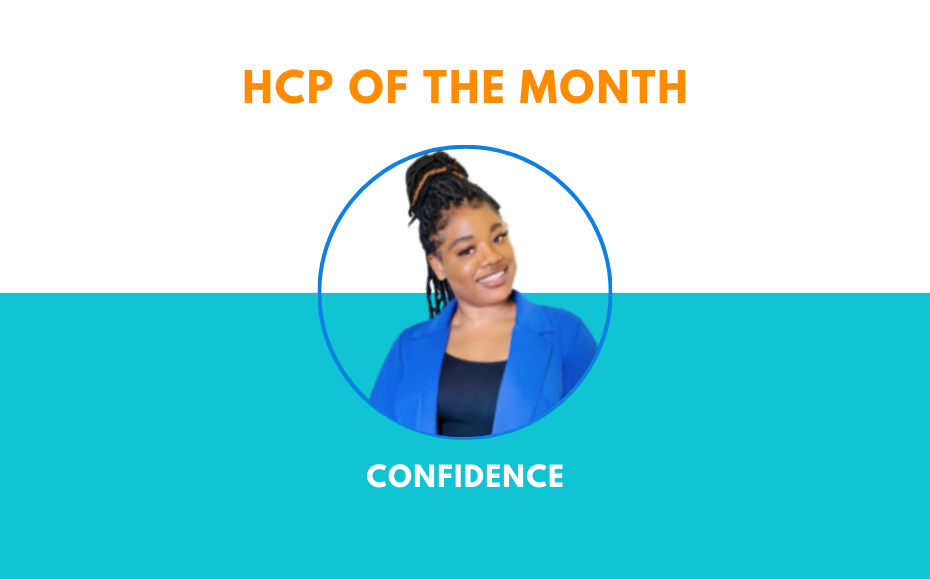It is difficult to cover nurse education costs all on your own. Though some are more affordable than others, nursing programs generally charge their students high tuition across all levels. None of this should get in the way of your nursing dreams, however. There are thankfully a number of different financial aid options available to the aspiring nurse. In particular, there are a host of scholarships that do not charge interest or debt. In case you do not know where to start, we have gathered 50 nursing scholarships that are well worth your consideration.
American Association of Men in Nursing Scholarships (National)
Scholarship Requirements :
- Academic status
- Personal statement
- CV and reference letter
- History of Volunteer work
Who Can Apply? :
- AAMN members who are undergraduate students
How Much Does the Scholarship Cover? : $1,000
Alabama Nurses Foundation Scholarships
Scholarship Requirements :
- Application forms
- Letter from school proving current enrollment
- 2 reference letters from faculty
- Official transcript
- Essay questions
- High-resolution headshot
- Proof of completion of one (or more) semester
Who Can Apply? :
- Student enrolled in a nursing program based in Alabama (covers BSN, MSN, DNP/PhD, ADN, LPN)
- Proof of Alabama Residence
- A cumulative GPA of 3.0 or higher
How Much Does the Scholarship Cover? : $3,000
Hurst Review American Association of Colleges of Nursing Scholarship
Scholarship Requirements :
- Registered account to MyAACN
- Application documents
- Transcripts
Who Can Apply? :
- ADN and BSN students with at least a 3.2 GPAe
- Students of ADN and BSN programs.
- A minimum 3.2 GPAE.
- Enrollment in an AACN member organization
How Much Does the Scholarship Cover? : $2,500
Army Nurse Corps Association Scholarship
Scholarship Requirements:
Who Can Apply? :
- BSN/advanced nursing students serving any US Army Branch. (Or Army members who were honorably discharged.)
- Not currently a recipient of Army educational funds.
How Much Does the Scholarship Cover? : Depends
Federal Pell Grant Scholarship
Scholarship Requirements :
- Completed Free Application for Federal Student Aid (FAFSA) form.
Who Can Apply? :
- Undergraduate students with no bachelor’s degree
- Either a US citizen or a permanent resident.
- In need of financial assistance.
How Much Does the Scholarship Cover? : Depends
American Indian Nurse Scholarships Program
Scholarship Requirements:
- Transcripts
- Letter of recommendation from a faculty member
- Forms of financial aid
- Biographical statement and high-quality photograph.
Who Can Apply? :
- Part of a tribe or village (or can show proof of ancestry)
- Either in the last semester of high school or a recent graduate
- Career goals are focused on assisting indigenous populations (American Indian, Hawaiian and Alaskan natives) and communities.
How Much Does the Scholarship Cover? : $1,500, every semester
Caroline E. Holt Nursing Scholarship
Scholarship Requirements :
Who Can Apply? :
- Attendance (or plans to attend) with an accredited college/University in the United States
- Awarded based on academic achievement, financial need, or commitment to the field.
- United States Citizenship
How Much Does the Scholarship Cover? : $1,000
Black Nurses Association of Greater Washington, D.C., Felicia C. Brady Scholarship
Scholarship Requirements :
- Updated official transcript documents
- Nursing license copy
- Letter of recommendation from clinical supervisor or former employer
- 300 word application essay
- Accolades and Certifications
- Filled out application
Who Can Apply? :
- African American with a permanent residence in D.C. or an adjacent Maryland county
- US Citizenship
- Membership with the Nurses Association of Greater Washington DC Area OR the National Black Nurses Association
- Active, licensed RN or LPN
- Currently attending an accredited ADN, MSN or DNP program
How Much Does the Scholarship Cover? : varies
David L. Burns Memorial Scholarship
Scholarship Requirements :
- 400- to 600-word essay on what helping addicted patients personally means to you.
Who Can Apply? :
- Currently enrolled in nursing or health-related degree programs
- Missouri resident
How Much Does the Scholarship Cover? : $2,500
Dr. Ifeoma Ezebuiro Ezeobele Africans in Nursing Scholarship
Scholarship Requirements :
- 400- to 600-word essay on why you selected nursing as your career path.
Who Can Apply? :
- Enrolled in an undergraduate nursing program
- African American
How Much Does the Scholarship Cover? : $1,000
Nurse I Am Scholarship
Scholarship Requirements:
- Fill out the application form online
Who Can Apply? :
- Currently enrolled in a nursing program (DNP/PHD, BSN, LPN, MSN)
How Much Does the Scholarship Cover? : $3,000
AvaCare Medical Scholarship
Scholarship Requirements:
- US Citizenship or ownership of an Alien Registration Card
- Highschool graduate OR current enrollment in an accredited US university/college
- A cumulative 3.0 GPA (or higher)
Who Can Apply?:
- US Citizen
- Pursuing a degree in health law, dentistry, nursing, nutrition, medicine, or any other medical field.
How Much Does the Scholarship Cover?: $1,000
ENA Foundation Scholarships
Scholarship Requirements:
- Fill out online application and provide relevant information
Who Can Apply?:
- Emergency Nurses Association members with good academic standing
- Non-members qualify for non-RN and undergraduate scholarships
How Much Does the Scholarship Cover?: $1000 to $10,000
Geraldine “Polly” Bednash Scholarship
Scholarship Requirements:
- 2 GPA or higher
Who Can Apply?:
Students enrolled in a BSN program (or higher)
- Program must be accredited with an AACN member institution connected to CastleBranch
- (Alternatively) Submitted nursing school application via NursingCAS
How Much Does the Scholarship Cover?: $5,000
HealthGrad.com Leadership Scholarship
Scholarship Requirements:
- Minimum 3.2 GPA
- Work history and activities
- Application essay and form
Who Can Apply?:
- Any undergraduate student enrolled in a healthcare-related program.
How Much Does the Scholarship Cover?: $1,000
Good Samaritan Foundation Nursing Scholarships
Scholarship Requirements:
- Letter of intent and letter of recommendation
- Filled out application form
- Copy of transcript (unofficial)
- CV and high resolution colored photo
Who Can Apply?:
- Nursing students enrolled in an accredited program in Texas
- Low-to-moderate income students
- Must be in good academic standing
How Much Does the Scholarship Cover?: $500–$1,000
Clarice Kanouse Memorial Scholarship
Scholarship Requirements:
- 400 to 600 word essay on overcoming adversity to pursue nurse education dreams
Who Can Apply?:
- Highschool/undergraduate students accepted to nursing programs
- Michigan resident
- Low-income, first generation students
- (optional) Applicants from single parent households are given priority
How Much Does the Scholarship Cover?: $2,000
Nurses Make a Difference Scholarship
Scholarship Requirements:
- Minimum 3.0 GPA or higher
- Legal US Residence (Citizenship or a valid student visa)
- Submit online application
- Essay
Who Can Apply?:
- Student currently enrolled with an accredited undergraduate nursing program at a college or university.
- (alternatively) High school students admitted to nursing programs
How Much Does the Scholarship Cover?: $1,000
Ruth Abernathy Presidential Scholarship
Scholarship Requirements:
- Minimum 3.5 GPA
- (For graduates) Enrolled full time for a master’s or doctoral degree program
- (Undergraduate) Senior or junior standing
Who Can Apply?:
- Registered SHAPE America members
- Majoring in a field related to healthcare, dance, physical recreation, or physical education.
How Much Does the Scholarship Cover?: $1,250 (undergraduate) to $1,750 (graduate)
Indiana Nursing Scholarship Fund Program
Scholarship Requirements:
- Application form and requirements sent to the partner institution
Who Can Apply?:
- Non-Indiana residents
- Full-time/first-year/first-time college students
- Actively enrolled in an Indiana-based BSN program
How Much Does the Scholarship Cover?: $3,000
Loreen K. Odemu Memorial Nursing Scholarship
Scholarship Requirements:
- 400 to 600 word essay detailing what motivated you to become a nurse and your goals
- Minimum 3.0 GPA (or higher)
Who Can Apply?:
- California residents
- Nursing students or high school seniors
How Much Does the Scholarship Cover?: $700
Tylenol Future Care Scholarship
Scholarship Requirements:
- One more year of school remaining
- Proof of enrollment in a graduate program for nursing, pharmacy, and/or medical.
Who Can Apply?:
- United States, Puerto Rico, or District of Columbia reference
- Graduate students or college students enrolling into graduate programs
How Much Does the Scholarship Cover?: $5,000 – $10,000
Irene and Daisy MacGregor Memorial Scholarship
Scholarship Requirements:
- Filled out application form
- Essay and resume
- Proof of US Citizenship
- Transcript documents
Who Can Apply?:
- Women are given preference
- Students who have been accepted to a graduate psychiatric nursing program in an accredited institution
How Much Does the Scholarship Cover?: $5,000
NurseThink American Association of Colleges of Nursing Scholarship
Scholarship Requirements:
- List of academic accomplishments
- Demographic information
- Short essay on post-graduation plans
- Fill out an application form online
Who Can Apply?:
- Students currently enrolled in Master’s or Doctorate nursing programs
- Members of AACN member institutions
- Committed to becoming a nurse educator or faculty member in the future.
How Much Does the Scholarship Cover?: $5,000
The Pride Foundation Scholarships
Scholarship Requirements:
- Fill out online application form
Who Can Apply?:
- Residents of Alaska, Montana, Oregon, Washington, or Idaho
- Counted as a resident if you lived in the state within three months of the application deadline OR have lived in the state for at least one year, within a five year period before the application deadline.
- Pursuing postsecondary education in the coming school year, with a medical field.
How Much Does the Scholarship Cover?: Depends
Dr. Martha Dawson Genesis Scholarship
Scholarship Requirements:
- Fill out your online application
- Essay
- High-resolution photograph
- CV and transcript
- References
- Proof of participation in student nurse activities involved with the African American community
Who Can Apply?:
- Member of the National Black Nurses Association
- Black graduate or postgraduate students currently enrolled in a university.
- Can also be an RN pursuing MSN, DNP or PHD degrees, as well as EoDs looking for administration roles.
How Much Does the Scholarship Cover?: $1,000
National CPR Foundation Healthcare and Education Scholarship Program
Scholarship Requirements:
- 8 GPA or higher
- CV
- 500 to 700 word essay
- Transcripts
- Proof of enrollment
Who Can Apply?:
- High school or undergraduate students
- US citizens
- At least 18 years old
How Much Does the Scholarship Cover?: $500 per month ($6,000 in total)
Healthline Stronger Scholarship
Scholarship Requirements:
- Demonstration of leadership, community involvement, and commitment to resolving inequality in healthcare.
Who Can Apply?:
- College seniors, college juniors, or graduate students
How Much Does the Scholarship Cover?: $5,000
Maureen C. Pace Memorial Nursing Scholarship
Scholarship Requirements:
- 400 to 600 word essay explaining why you chose nursing.
Who Can Apply?:
- Resident of New York
- High school seniors, undergraduate students or graduate students.
How Much Does the Scholarship Cover?: $2,000
Donald E. Pizzini Memorial Nurse Scholarship (Montana)
Scholarship Requirements:
- Filled out application form
- Official transcript documents
- Proof of acceptance
- 2 recommendation letters
- Pass the initial interview
- US Citizenship (or a residence visa)
- Montana resident
Who Can Apply?:
- College students enrolled in nursing programs and fields related to long term care
- HCPs working in long term care settings and simultaneously pursuing nursing degrees.
- Must have plans to work or continue working in long term care facilities based in Montana
How Much Does the Scholarship Cover?: $2,500
Green Law Firm Nursing Home and Elderly Care Scholarship
Scholarship Requirements:
- Filled out application form
- Official transcript documents
- Cover letter
- 500-1000 word essay
Who Can Apply?:
- Currently working in elderly care facilities such as nursing homes
- Currently enrolled in a BSN or ADN-to-BSN bridge program
How Much Does the Scholarship Cover?: $1,500
Marsha’s Angels Scholarship Fund (Sedgwick County, Kansas)
Scholarship Requirements:
- Filled out application form
Who Can Apply?:
- Nursing program students based in Sedgwick County, KS or its surrounding counties.
- Students who are not based in Sedgwick County, but are enrolled in nursing programs in the area, a surrounding county, or St. Luke’s College of Health Sciences (found in Kansas City, MO.)
How Much Does the Scholarship Cover?: $2,000 per year
Mary Eliza Mahoney Memorial Scholarship
Scholarship Requirements:
- Members of non-nursing labor unions not working as nurses
- Enrollment in an accredited nursing program
- Minnesota native
- Completed at least one semester in said nursing program
- People of color and especially indigenous people are given preference
- Should join Minnesota Nurses Association upon successful application
Who Can Apply?:
- 1 recommendation letter from faculty members
- 1 recommendation letter from a union leader
- 1 recommendation letter from a personal reference
- 300 to 500 word essay
- Filled out application form
- Official transcript documents
How Much Does the Scholarship Cover?: $2,500 per semester and potentially $10,000 in total
National Association of Hispanic Nurses Scholarships
Scholarship Requirements:
- Academic letter of recommendation
- 500 word essay
- Letter of recommendation from the NAHN
- Transcript documents
- CV
- Proof of enrollment to an accredited nursing program
Who Can Apply?:
- Currently enrolled full time in an accredited nursing program
- Must be an NAHN member with good academic standing
How Much Does the Scholarship Cover?: depends
Foundation of National Student Nurses’ Association Online Scholarships
Scholarship Requirements:
- Faculty member and financial aid certification form
- Unofficial transcript documents
- $10 submission fee
Who Can Apply?:
- US Citizens, permanent residents or owners of Alien Registration numbers.
- Undergraduate students enrolled in ADN, SN, Diploma, Direct Entry Master’s, RN to BSN/MSN bridge programs, LPN, RN, or accelerated programs.
- Graduated after July 1
How Much Does the Scholarship Cover?: varies
American Red Cross Jane Delano Student Nurse Scholarship
Scholarship Requirements:
- Complete two part essay
- Fill out application form
Who Can Apply?:
- 1 year of college credit
- Good academic standing in an accredited US nursing program
- Has completed Red Cross volunteer work in the last 5 years
How Much Does the Scholarship Cover?: $3,000
Coursey Enterprises Student Scholarships
Scholarship Requirements:
- Fill out application online
- 200 word personal essay
- Personal photo
Who Can Apply?:
- First year nursing students
- Must be enrolled in an RN/LPN program
How Much Does the Scholarship Cover?: $250
Unigo $10K Scholarship
Scholarship Requirements:
- Fill out online application
- 250 word essay based on current prompt
Who Can Apply?:
- 13 years or older by the time of application
- Legal US residents
How Much Does the Scholarship Cover?: $10,000
The Kim and Harold Louie Family Foundation Scholarship Program
Scholarship Requirements:
- 4 GPA or higher
- 1200/1600 or 1800/2400 SAT score
- (alternatively) 25 ACT score
Who Can Apply?:
- High school students or college students enrolled in a college in the US
- Must be a Freshman for the coming school year
How Much Does the Scholarship Cover?: Depends
Steven Bufton Memorial Educational Fund Legacy Scholarship
Scholarship Requirements:
- Fill out application on the website
Who Can Apply?:
- Female students
- Enrolled in a nursing program
- Must be in their sophomore or freshman year
How Much Does the Scholarship Cover?: $5,000–$10,000.
Purple Heart Scholarship Program
Scholarship Requirements:
- Graduate or upcoming graduate of highschool, or a GED program
- Recently accepted into an accredited US college, trade school, or university
- 75 GPA or higher
- Fill out online application
- Personal essay
- Letter of recommendation
Who Can Apply?:
- Members of the Military Order of the Purple Heart
- The spouses, widows/widowers, or direct descendants of said members
How Much Does the Scholarship Cover?: Varies
Asian American / Pacific Islander Nurses Association Scholarship
Scholarship Requirements:
- Two years of AAPINA membership
- Currently an active member
- Enrolled in an accredited nursing program
- CV
- Two letters of recommendation
Who Can Apply?:
- AAPINA Members
- Currently pursuing nursing degree (undergraduate or graduate)
How Much Does the Scholarship Cover?: $500
New Mexico Center for Nursing Excellence Nightingale Scholarship
Scholarship Requirements:
- 5 GPA or higher
- Transcript documents
- Personal essay
- Completion of at least 1 semester of nursing courses
- 2 letters of recommendation
- Filled out application form
Who Can Apply?:
- Nursing students enrolled in ADN, BSN, RN to BSN, or advanced nursing degree programs based in New Mexico
- Either New Mexico residency or membership with the Navajo Nation
How Much Does the Scholarship Cover?: $2,500
Missouri Professional and Practical Nursing Student Loan Repayment Program
Scholarship Requirements:
- Fill out application form
- Personal essay
- Proof of Missouri residency
- Most recent income tax return
- Financial aid award notice given by school
- Analysis of financial need
Who Can Apply?:
- Enrolled/accepted in a Missouri-based nursing program
- Will agree to practice within a Missouri Health Professional Shortage Area after graduation
- Currently pursuing a nursing degree or license
How Much Does the Scholarship Cover?: $5,000 (LPNs) or $10,000 (RN, ADN, DN, BSN, MSN, APN, DNP students)
NurseCorps Scholarship Program
Scholarship Requirements:
- Fill out application form
- US citizenship or lawful permanent residence
Who Can Apply?:
- No current service commitments
- No overdue federal judgment liens or debt
- Nursing students enrolled in accredited undergraduate degree programs
How Much Does the Scholarship Cover?: Full tuition + monthly stipend and reasonable costs covered
Nurse.org Healthcare Leaders Scholarship
How Much Does the Scholarship Cover? : $1,500
Who Can Apply? :
- Students entering or enrolled in a nursing or medical program
- S. citizens
- Must be at least 17 years of age
- Must have a GPA of 3.0 or higher
Scholarship Requirements :
- Application form with enrollment information
- 3 short personal essays
Learn more about the Nurse.org Healthcare Leaders Scholarship.
Nurses Pub Scholarship
How Much Does the Scholarship Cover? : varies
Who Can Apply? :
- Students currently in a vocational, ADN, or BSN program
Scholarship Requirements :
Learn more about the Nurses Pub Scholarship.
Nursing Economic$ Foundation Scholarship (National)
How Much Does the Scholarship Cover? : $5,000+
Who Can Apply? :
- RNs accepted into a master’s or doctoral program focusing on administration or management
- Must be a U.S. citizen
Scholarship Requirements :
- Application form
- Transcripts
- Test scores
- Resume
- Special requirements
- Degree tuition information
Learn more about the Nursing Economic$ Foundation Scholarship.
Oregon Nurses Foundation Smith Education Scholarship
How Much Does the Scholarship Cover? : up to $5,000
Who Can Apply? :
- Must be enrolled in an accredited nursing program, and have completed at least 1 term
- Minimum GPA of 3.5
- Cannot be an ONF staff member
Scholarship Requirements :
- Application forms
- Official transcripts
- 3 letters of recommendation submitted directly by references
Learn more about the Oregon Nurses Foundation Smith Education Scholarship.
Philippine Nurses Association of America Scholarships (National)
How Much Does the Scholarship Cover? : $1,000 (per semester)
Who Can Apply? :
- Students pursuing master’s or doctoral degrees in nursing
- Must be members of the PNAA at least 1 year before the application deadline
- Must have a minimum GPA of 3.0
- Must be enrolled or accepted into an accredited nursing program
Scholarship Requirements :
Learn more about the Philippine Nurses Association of America Scholarships.
Promise of Nursing Faculty Fellowship (California)
How Much Does the Scholarship Cover? : $1,000–$7,500 per year
Who Can Apply? :
- Must be a BSN nurse enrolled in a graduate program in California
- Must be a U.S. citizen or permanent resident
- Must be enrolled in a graduate school program in California
- Must be currently in courses and registered for at least 6 credits
- Must commit to stay within California once the program is complete
- Must have established financial need
Scholarship Requirements :
- CV
- Most current academic transcript
- Dean/director certification
- One letter of reference from a professional colleague
- Financial aid certification
- Copy of your current RN license
Learn more about the Promise of Nursing Faculty Fellowship.
Romeo Nursing Scholarship (National)
How Much Does the Scholarship Cover? : $700
Who Can Apply? :
- Must be pursuing an undergraduate degree in nursing
Scholarship Requirements :
- 400- to 600-word essay on why it is important to you to pursue nursing as a career path
Learn more about the Romeo Nursing Scholarship.
Tolliver Annual Nursing Scholarship (Kentucky)
How Much Does the Scholarship Cover? : $1,000
Who Can Apply? :
- High school seniors in Kentucky pursuing a nursing degree
- Must be applying to an accredited college in Kentucky
- Open to 2-year and 4-year degree programs
Scholarship Requirements :
- Email sponsors for requirements
- Application form
- Essay required
Learn more about the Tolliver Annual Nursing Scholarship by emailing the Law Firm of Jack Tolliver, MD & associates.
Tylenol Future Care Scholarship (National)
How Much Does the Scholarship Cover? : $5,000–$10,000
Who Can Apply? :
- Graduate students or college seniors enrolled in accredited nursing and health sciences programs
- Must be a resident of the U.S., Puerto Rico, or the District of Columbia
- Must have 1 or more years of school remaining
Scholarship Requirements :
- Proof of enrollment to a graduate program in medical school, nursing, or pharmacy
- Personal essay
Learn more about the Tylenol Future Care Scholarship.
Vermont Nursing Workforce Incentive Loan Forgiveness Program
How Much Does the Scholarship Cover? : up to full tuition forgiveness
Who Can Apply? :
- Nursing students enrolled in an accredited school approved for federal Title IV funding anywhere in the U.S.
- LPN, ADN, BSN, and graduate students
- Vermont and non-Vermont residents
- Must maintain good academic standing
Scholarship Requirements :
- Must agree to work in Vermont for a minimum of 1 year following licensure (travel nurses excluded)
- Completed FAFSA application
Learn more about the Vermont Nursing Workforce Incentive Loan Forgiveness Program.
Vermont Student Assistance Corporation Nursing Scholarships
How Much Does the Scholarship Cover? : varies
Who Can Apply? :
- Students enrolled in a degree program in nursing or nursing education
- Must be at an accredited school approved for Title IV funding
- Must be a Vermont resident
- Must be a U.S. citizen
Scholarship Requirements :
- A Vermont Student Assistance Corporation (VSAC) online account
- Application forms
- Personal essay
Learn more about VSAC-assisted scholarships.
Washington State Nurse Educator Loan Repayment Program
How Much Does the Scholarship Cover? : varies
Who Can Apply? :
- Nurse educators and clinical care nurses in the state of Washington
- Must commit to serving as a faculty member in an approved Washington nursing school for a specific time frame
- Must be a U.S. citizen, permanent resident, or eligible to work in Washington State
- Must meet minimum working requirements of 1 class per quarter for 3 semesters
Scholarship Requirements :
Learn more about the Washington State Nurse Educator Loan Repayment Program.
Wisconsin Nurses Association Educational Scholarships
How Much Does the Scholarship Cover? : up to $4,000
Who Can Apply? :
- Nurses enrolled in a BSN, MSN, or DNP program
- Must be a resident of Wisconsin and member of WNA
Scholarship Requirements :
- Application form
- Copy of your Wisconsin RN license
- Evidence of acceptance into an accredited program
- CV or resume
- Personal letter identifying your professional goals, and how you’ll contribute to nursing care in Wisconsin
- Letter of support/recommendation
- Written description of financial need













